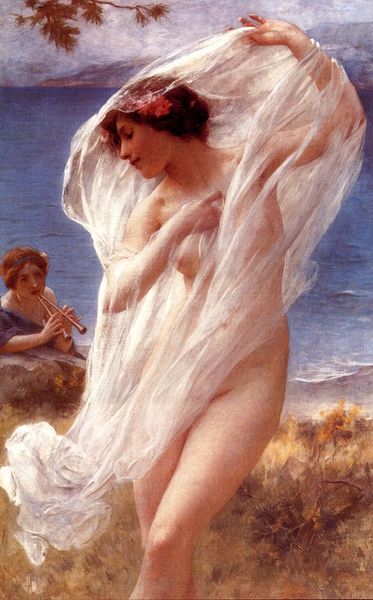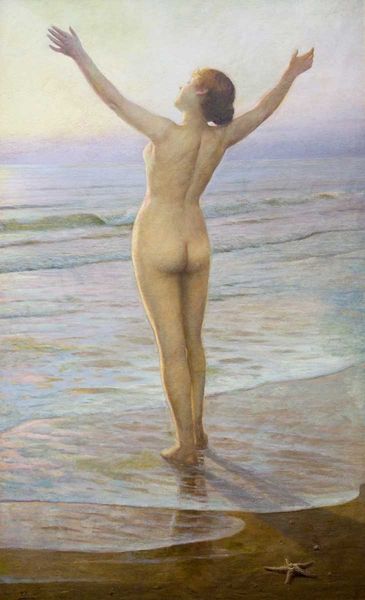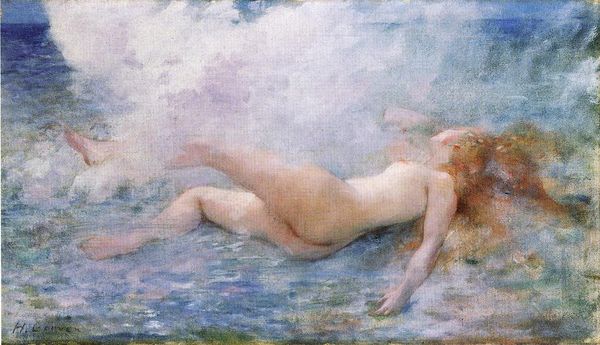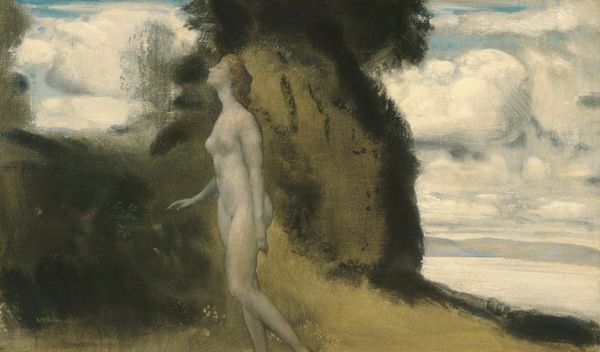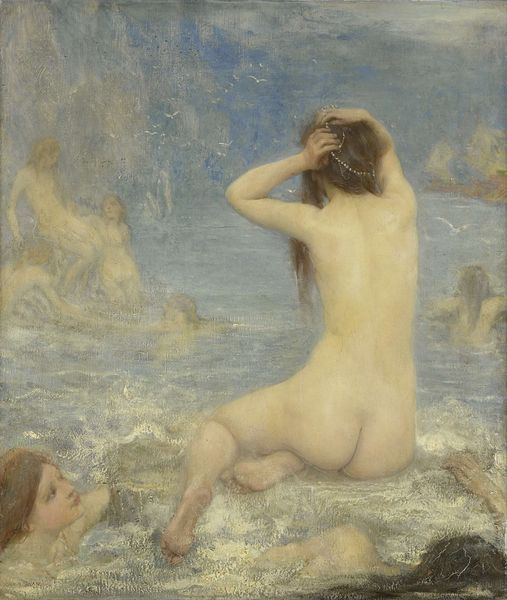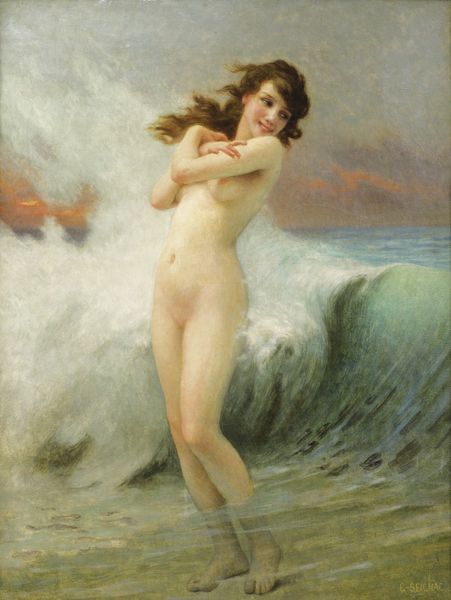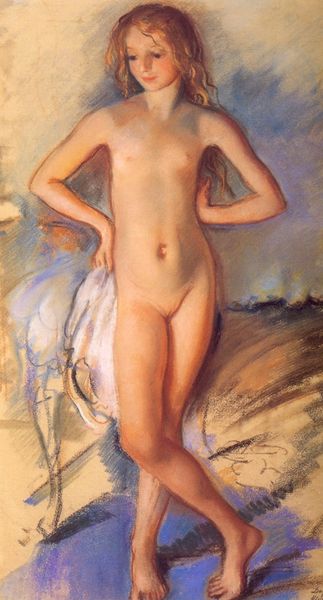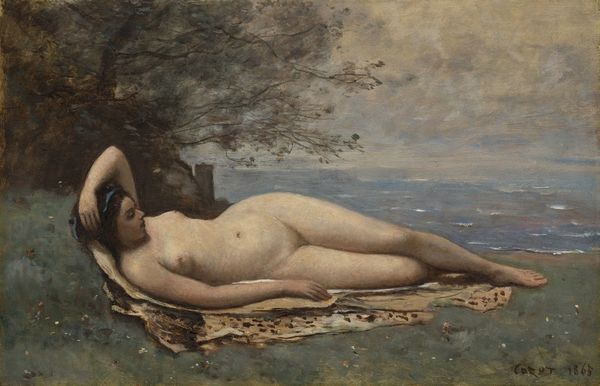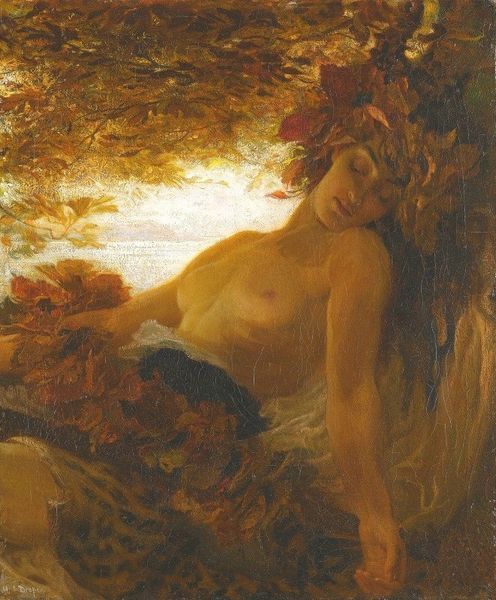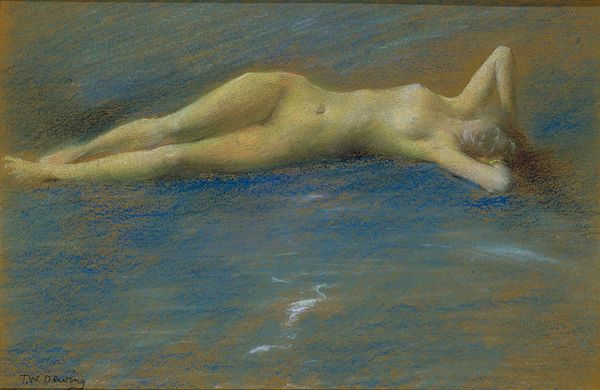
Copyright: Public domain
Herbert Draper painted this nude in oils, at the close of the 19th century when the classical tradition and romanticism were still prevailing. Looking at the image, one cannot help but notice a nude fair-skinned woman sitting on a rock, gazing over the water. This imagery presents a specific set of assumptions about beauty, femininity, and the natural world. It also reinforces prevailing power dynamics within the art world in Britain, where the display of the female nude was considered an acceptable subject for art when it was presented through the lens of classical mythology or allegory. Draper was a product of the British art education system, which was heavily influenced by academic traditions emphasizing classical techniques and subject matter. His work also responds to the Victorian era, and although it avoids direct representation of contemporary social issues, it still reflects the values and tastes of the period. When interpreting such imagery, social historians must consider the kind of research resources, institutional records, and audience receptions that inform our understanding of art as a cultural and historical phenomenon.
Comments
No comments
Be the first to comment and join the conversation on the ultimate creative platform.
